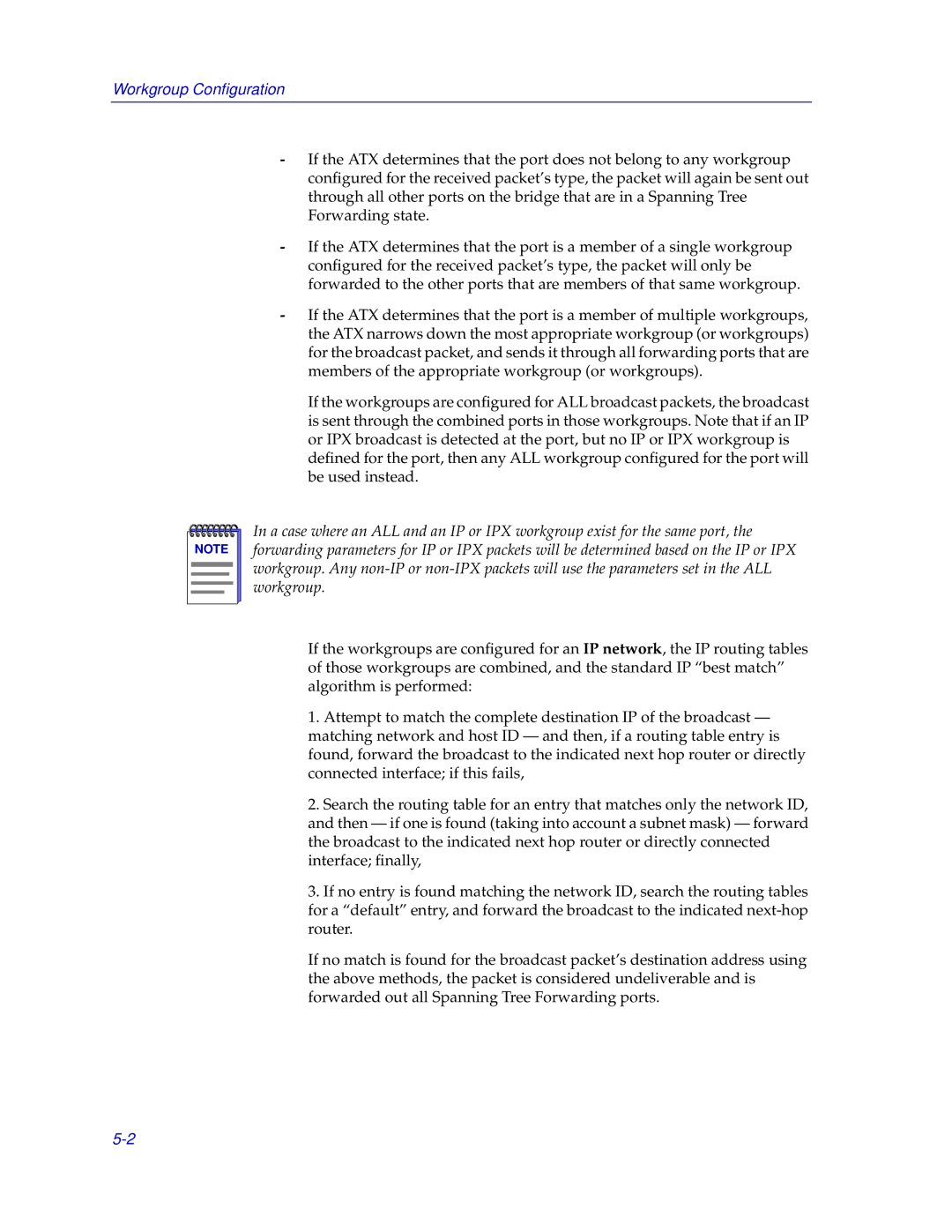
Workgroup Configuration
-If the ATX determines that the port does not belong to any workgroup configured for the received packet’s type, the packet will again be sent out through all other ports on the bridge that are in a Spanning Tree Forwarding state.
-If the ATX determines that the port is a member of a single workgroup configured for the received packet’s type, the packet will only be forwarded to the other ports that are members of that same workgroup.
-If the ATX determines that the port is a member of multiple workgroups, the ATX narrows down the most appropriate workgroup (or workgroups) for the broadcast packet, and sends it through all forwarding ports that are members of the appropriate workgroup (or workgroups).
If the workgroups are configured for ALL broadcast packets, the broadcast is sent through the combined ports in those workgroups. Note that if an IP or IPX broadcast is detected at the port, but no IP or IPX workgroup is defined for the port, then any ALL workgroup configured for the port will be used instead.
NOTE |
In a case where an ALL and an IP or IPX workgroup exist for the same port, the forwarding parameters for IP or IPX packets will be determined based on the IP or IPX workgroup. Any
If the workgroups are configured for an IP network, the IP routing tables of those workgroups are combined, and the standard IP “best match” algorithm is performed:
1.Attempt to match the complete destination IP of the broadcast — matching network and host ID — and then, if a routing table entry is found, forward the broadcast to the indicated next hop router or directly connected interface; if this fails,
2.Search the routing table for an entry that matches only the network ID, and then — if one is found (taking into account a subnet mask) — forward the broadcast to the indicated next hop router or directly connected interface; finally,
3.If no entry is found matching the network ID, search the routing tables for a “default” entry, and forward the broadcast to the indicated
If no match is found for the broadcast packet’s destination address using the above methods, the packet is considered undeliverable and is forwarded out all Spanning Tree Forwarding ports.
